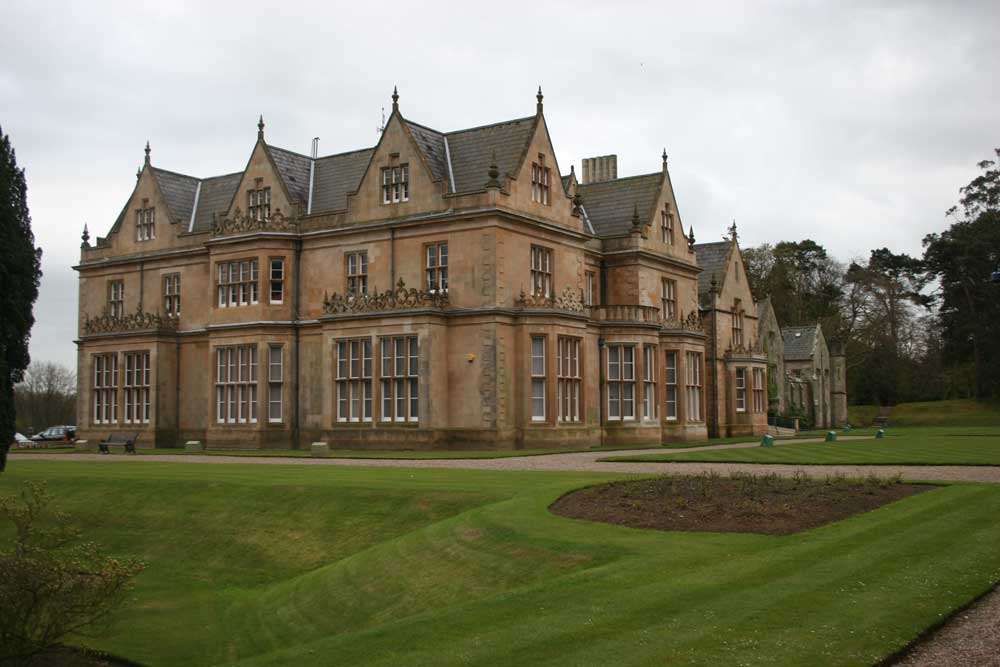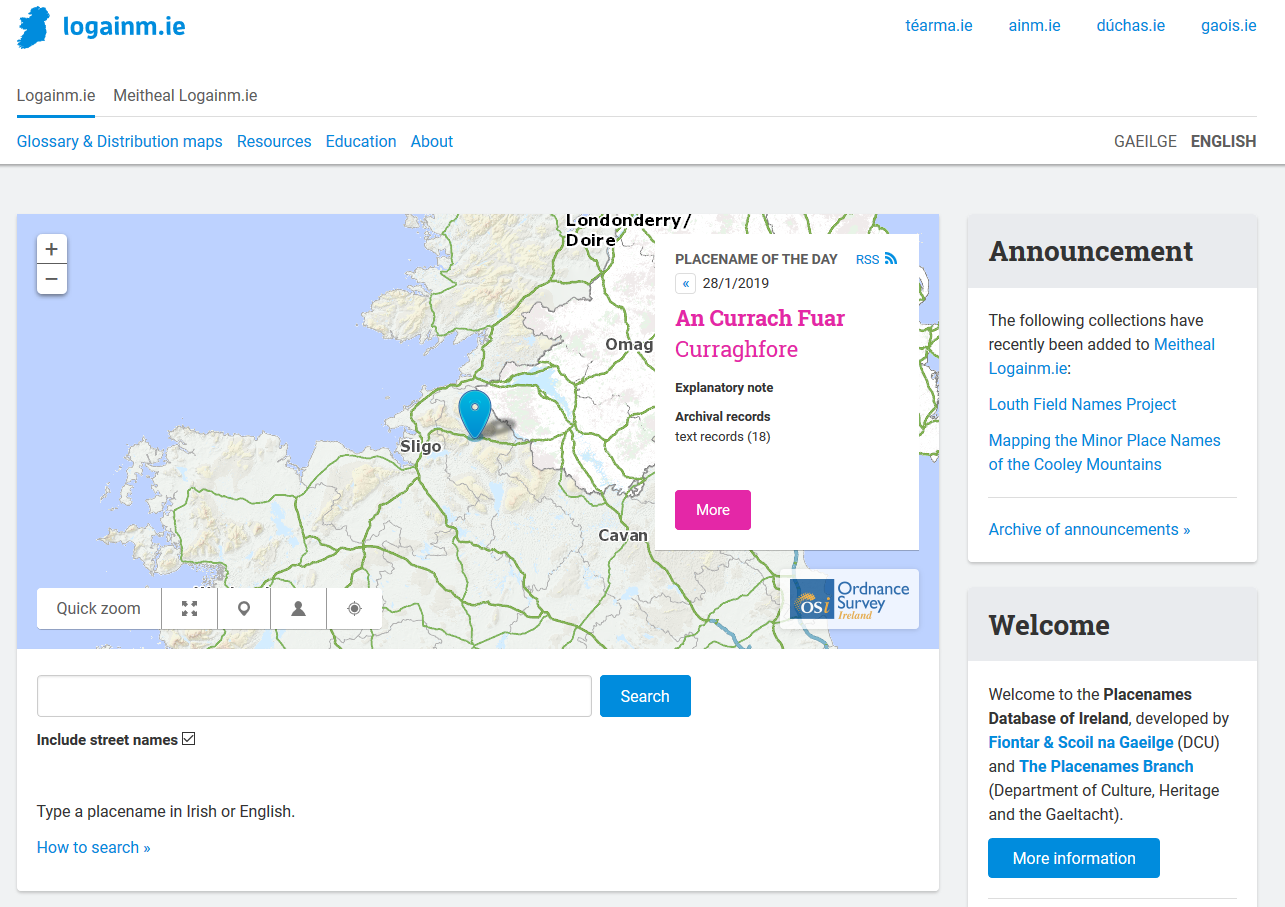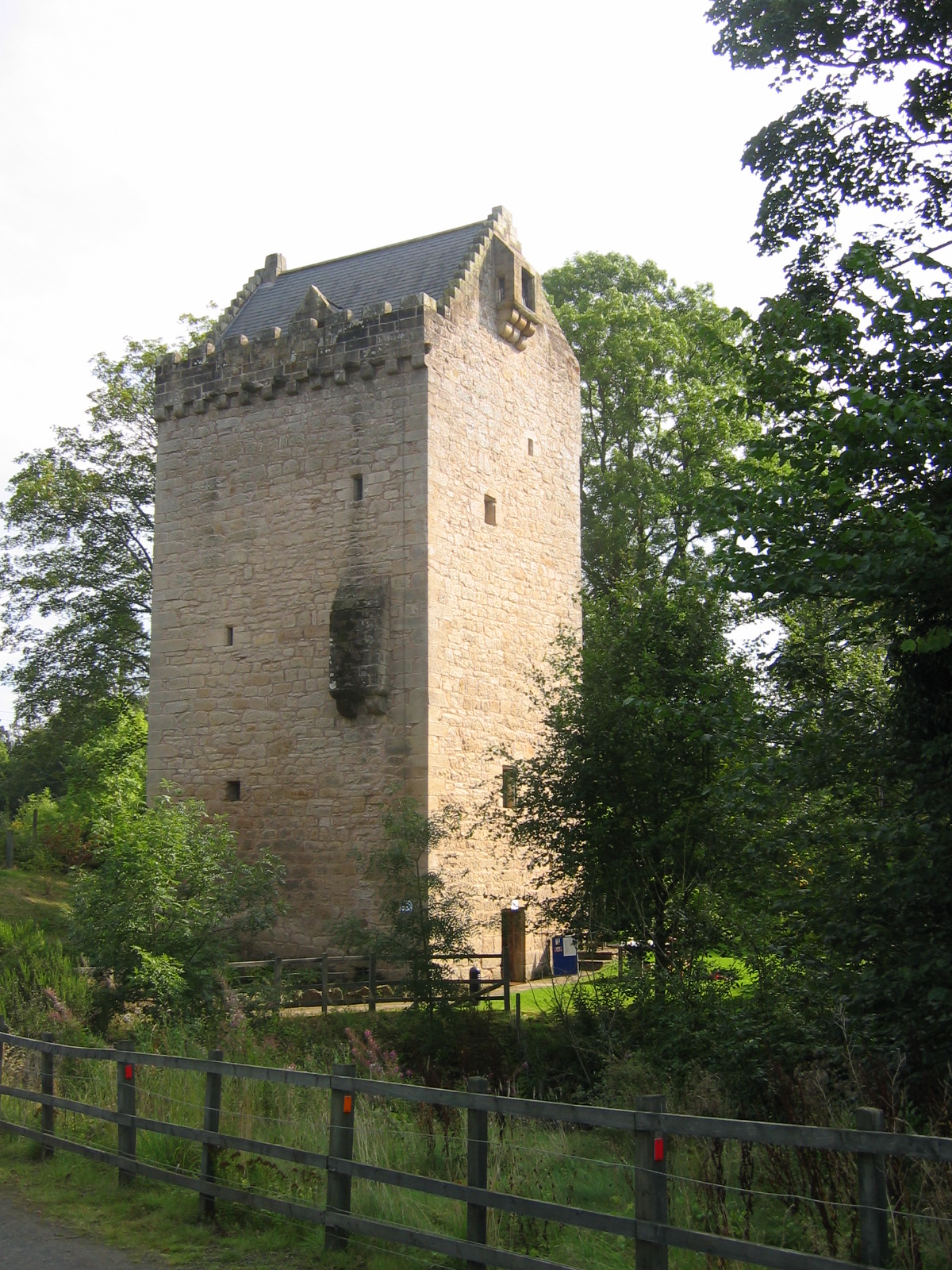|
Cloghy West
Cloghy ( ; ), also spelt Cloughy or Cloughey, is a small village in County Down, Northern Ireland. It lies on the east (Irish Sea) coast of the Ards Peninsula, in the Ards and North Down Borough. It had a population of 1,075 people in the 2011 Census. Places of interest * Kirkistown Castle, an impressive tower house built in 1622 by Roland Savage. It post-dates the Plantation but is fully in the late medieval tower-house tradition. Parts of the bawn wall survive with three-quarter round flanker towers at the angles. The tower was remodelled in gothic style in 1800. The Environment and Heritage Service opened it to the public for the first time in 2001. *The nearby South and North Rocks have always been deemed two of the most deadly hazards off the coast of the Ards Peninsula. In the 25 years between 1875 and 1900, 75 boats and 29 men were lost. Population 2001 Census Cloghy is classified as a small village by the Northern Ireland Statistics and Research Agency (NISRA) (i.e. with ... [...More Info...] [...Related Items...] OR: [Wikipedia] [Google] [Baidu] |
Ards And North Down Borough Council
Ards and North Down Borough Council is a local authority in Northern Ireland that was established on 1 April 2015. It replaced Ards Borough Council and North Down Borough Council. The first elections to the authority took place on 22 May 2014 and, prior to the official creation of the Ards and North Down district on 1 April 2015, it acted as a shadow authority. The district was originally called "North Down and Ards" but the council was known as "Ards and North Down District Council". Councillors on the transitional shadow authority (prior to the council's official creation) voted on 15 December 2014 to submit an application to the Department of the Environment An environmental ministry is a national or subnational government agency politically responsible for the environment and/or natural resources. Various other names are commonly used to identify such agencies, such as Ministry of the Environment, ... to change the name to ''East Coast Borough Council'' with effect ... [...More Info...] [...Related Items...] OR: [Wikipedia] [Google] [Baidu] |
County Down
County Down () is one of the six counties of Northern Ireland, one of the nine counties of Ulster and one of the traditional thirty-two counties of Ireland. It covers an area of and has a population of 552,261. It borders County Antrim to the north, the Irish Sea to the east, County Armagh to the west, and County Louth across Carlingford Lough to the southwest. In the east of the county is Strangford Lough and the Ards Peninsula. The largest settlement is Bangor, County Down, Bangor, a city on the northeast coast. Three other large towns and cities are on its border: Newry lies on the western border with County Armagh, while Lisburn and Belfast lie on the northern border with County Antrim. Down contains both the southernmost point of Northern Ireland (Cranfield Point) and the easternmost point of Ireland (Burr Point). It was one of two counties of Northern Ireland to have a Protestant majority at the time of the United Kingdom Census 2001, 2001 census. The other Protestant-m ... [...More Info...] [...Related Items...] OR: [Wikipedia] [Google] [Baidu] |
Placenames Database Of Ireland
The Placenames Database of Ireland (), also known as , is a database and archive of place names in Ireland. It was created by Fiontar, Dublin City University in collaboration with the Placenames Branch of the Department of Tourism, Culture, Arts, Gaeltacht, Sport and Media. The website is a public resource primarily aimed at journalists and translators, students and teachers, historians and researchers in genealogy. Placenames Commission and Placenames Branch The Placenames Commission () was established by the Department of Finance in 1946 to advise Ordnance Survey Ireland and the government of what the Irish name of places should be. Although both the 1922 Constitution of the Irish Free State and the current constitution adopted in 1937 recognised Irish as the national language, the law in regard to placenames was carried over from the 19th-century UK statutes which established the Ordnance Survey and Griffith's Valuation, under which only an English-language name had offi ... [...More Info...] [...Related Items...] OR: [Wikipedia] [Google] [Baidu] |
Village
A village is a human settlement or community, larger than a hamlet but smaller than a town with a population typically ranging from a few hundred to a few thousand. Although villages are often located in rural areas, the term urban village is also applied to certain urban neighborhoods. Villages are normally permanent, with fixed dwellings; however, transient villages can occur. Further, the dwellings of a village are fairly close to one another, not scattered broadly over the landscape, as a dispersed settlement. In the past, villages were a usual form of community for societies that practice subsistence agriculture and also for some non-agricultural societies. In Great Britain, a hamlet earned the right to be called a village when it built a church.-4; we might wonder whether there's a point at which it's appropriate to talk of the beginnings of French, that is, when it wa ... ''village'', from Latin ''villāticus'', ultimately from Latin ''villa'' (English ''vi ... [...More Info...] [...Related Items...] OR: [Wikipedia] [Google] [Baidu] |
Northern Ireland
Northern Ireland ( ; ) is a Countries of the United Kingdom, part of the United Kingdom in the north-east of the island of Ireland. It has been #Descriptions, variously described as a country, province or region. Northern Ireland shares Republic of Ireland–United Kingdom border, an open border to the south and west with the Republic of Ireland. At the 2021 United Kingdom census, 2021 census, its population was 1,903,175, making up around 3% of the Demographics of the United Kingdom#Population, UK's population and 27% of the population on the island of Ireland#Demographics, Ireland. The Northern Ireland Assembly, established by the Northern Ireland Act 1998, holds responsibility for a range of Devolution, devolved policy matters, while other areas are reserved for the Government of the United Kingdom, UK Government. The government of Northern Ireland cooperates with the government of Ireland in several areas under the terms of the Good Friday Agreement. The Republic of Ireland ... [...More Info...] [...Related Items...] OR: [Wikipedia] [Google] [Baidu] |
Irish Sea
The Irish Sea is a body of water that separates the islands of Ireland and Great Britain. It is linked to the Celtic Sea in the south by St George's Channel and to the Inner Seas off the West Coast of Scotland in the north by the North Channel (Great Britain and Ireland), North Channel. Anglesey, North Wales, is the largest island in the Irish Sea, followed by the Isle of Man. The term ''Manx Sea'' may occasionally be encountered (, , ). On its shoreline are Scotland to the north, England to the east, Wales to the southeast, Northern Ireland and the Republic of Ireland to the west. The Irish Sea is of significant economic importance to regional trade, shipping and transport, as well as fishing and power generation in the form of wind power and nuclear power plants. Annual traffic between Great Britain and Ireland is over 12 million passengers and of traded goods. Topography The Irish Sea joins the North Atlantic at both its northern and southern ends. To the north, the ... [...More Info...] [...Related Items...] OR: [Wikipedia] [Google] [Baidu] |
Ards Peninsula
The Ards Peninsula () is a peninsula in County Down, Northern Ireland, on the north-east coast of Ireland. It separates Strangford Lough from the North Channel (Great Britain and Ireland), North Channel of the Irish Sea. Towns and villages on the peninsula include Donaghadee, Millisle, Portavogie and Portaferry. The large towns of Newtownards and Bangor, County Down, Bangor are at the mainland edge of the peninsula. Burr Point is the Extreme points of Ireland, easternmost point on the island of Ireland. History In the Middle Ages, the Ards peninsula was inhabited by the Uí Echach Arda, a Gaelic Ireland, Gaelic Irish clan, and was part of the kingdom of Ulaid. In the late 12th century it was invaded and conquered by the Anglo-Normans under John de Courcy, becoming a county of the Earldom of Ulster. The Earldom collapsed in the 14th century, but the Normans in Ireland, Hiberno-Norman Savage family (Ireland), Savage family controlled the southern portion of the peninsula (the 'Up ... [...More Info...] [...Related Items...] OR: [Wikipedia] [Google] [Baidu] |
Kirkistown Castle
Kirkistown Castle is a tower house situated near Cloghy, County Down, Northern Ireland. History The building is a three-storey tower house, built in 1622 by Roland Savage, a Norman landlord, at the site of a ninth-century round tower. It was occupied until 1731, when it was deserted. Structure The house post-dates the Plantation, but is fully in the late medieval tower-house tradition. Parts of the bawn wall survive with three-quarter round flanker towers at the angles. The tower was remodelled in Gothic style in 1800 by a Col. Johnston, and in 1836 some further work was performed by a very young Master Montgomery of Grey Abbey. The building was left, however, with a partial roof and broken windows, and the elements soon returned it to disrepair. The Northern Ireland Environment Agency opened it to the public for the first time in 2001. See also *Castles in Northern Ireland This List of Castles in Ireland, be they in Northern Ireland (United Kingdom) or in the Repub ... [...More Info...] [...Related Items...] OR: [Wikipedia] [Google] [Baidu] |
Tower House
A tower house is a particular type of stone structure, built for defensive purposes as well as habitation. Tower houses began to appear in the Middle Ages, especially in mountainous or limited access areas, to command and defend strategic points with reduced forces. At the same time, they were also used as an aristocrat's residence, around which a castle town was often constructed. Europe After their initial appearance in Ireland, Scotland, the Frisian lands, Northern Spain and England during the High Middle Ages, tower houses were also built in other parts of western Europe, especially in parts of France and Italy. In Italian medieval communes, urban ''palazzi'' with a very tall tower were increasingly built by the local highly competitive patrician families as power centres during times of internal strife. Most north Italian cities had a number of these by the end of the Middle Ages, but few now remain, notably two towers in Bologna, twenty towers in Pavia and fourtee ... [...More Info...] [...Related Items...] OR: [Wikipedia] [Google] [Baidu] |
Plantation Of Ulster
The Plantation of Ulster (; Ulster Scots dialects, Ulster Scots: ) was the organised Settler colonialism, colonisation (''Plantation (settlement or colony), plantation'') of Ulstera Provinces of Ireland, province of Irelandby people from Great Britain during the reign of King James VI and I. Small privately funded plantations by wealthy landowners began in 1606,... while the official plantation began in 1609. Most of the land had been confiscated from the native Irish nobility, Gaelic chiefs, several of whom Flight of the Earls, had fled Ireland for mainland Europe in 1607 following the Nine Years' War (Ireland), Nine Years' War against Kingdom of Ireland, English rule. The official plantation comprised an estimated half a million Irish acre, acres (2,000 km2) of arable land in counties County Armagh, Armagh, County Cavan, Cavan, County Fermanagh, Fermanagh, County Tyrone, Tyrone, County Donegal, Donegal, and County Londonderry, Londonderry. Land in counties County Antrim, ... [...More Info...] [...Related Items...] OR: [Wikipedia] [Google] [Baidu] |
Bawn
A bawn is the defensive wall surrounding an Irish tower house. It is the anglicised version of the Irish word ''bábhún'' (sometimes spelt ''badhún''), possibly meaning "cattle-stronghold" or "cattle-enclosure".See alternative traditional spellings under ''badhbhdhún'' in ''Foclóir Uí Dhuinnín'': http://www.scriobh.ie/Page.aspx?id=26&l=1 . The standard modern spelling is ''bábhún'': Ó Domhnaill, Niall (eag.), ''Foclóir Gaeilge Béarla'', Baile Átha Cliath: Oifig an tSoláthair (1977), p. 73. The Irish word for "cow" is ''bó'' and its plural is ''ba''. The Irish word for "stronghold, enclosure" is ''dún'', whose genitive case is ''dúin''. The original purpose of bawns was to protect cattle from attack. They included trench A trench is a type of digging, excavation or depression in the ground that is generally deeper than it is wide (as opposed to a swale (landform), swale or a bar ditch), and narrow compared with its length (as opposed to a simple hole or trapp ... [...More Info...] [...Related Items...] OR: [Wikipedia] [Google] [Baidu] |
Northern Ireland Statistics And Research Agency
The Northern Ireland Statistics and Research Agency (NISRA, ) is an executive agency within the Department of Finance (Northern Ireland), Department of Finance in Northern Ireland. The organisation is responsible for the collection and publication of statistics related to the economy, population and society of Northern Ireland. It is responsible for conducting the decennial census, with the last Census in Northern Ireland held on 21 March 2021, and incorporates the General Register Office (Northern Ireland), General Register Office (GRO) for Northern Ireland which is responsible for the registration of births, marriages, civil partnerships and deaths. Statistics Advisory Committee In 1988, Statistics Advisory Committee was set up as a non-departmental public body to the Department of Finance (Northern Ireland), Department of Finance to advise on matters relating to the collection and disclosure of statistical information from businesses. Northern Ireland Order 1988. See also ... [...More Info...] [...Related Items...] OR: [Wikipedia] [Google] [Baidu] |








